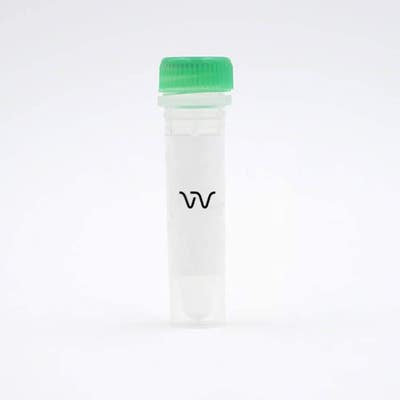

HTRF Strep-Tactin XL665-Conjugate, 5,000 Assay Points


HTRF Strep-Tactin XL665-Conjugate, 5,000 Assay Points






HTRF Strep-Tactin®-XL665 can be used to capture Strep-tag® II and Twin Strep-tag®-tagged proteins.
For research use only. Not for use in diagnostic procedures. All products to be used in accordance with applicable laws and regulations including without limitation, consumption and disposal requirements under European REACH regulations (EC 1907/2006).
| Feature | Specification |
|---|---|
| Application | Protein-Protein Interaction |
HTRF Strep-Tactin®-XL665 can be used to capture Strep-tag® II and Twin Strep-tag®-tagged proteins.
For research use only. Not for use in diagnostic procedures. All products to be used in accordance with applicable laws and regulations including without limitation, consumption and disposal requirements under European REACH regulations (EC 1907/2006).



HTRF Strep-Tactin XL665-Conjugate, 5,000 Assay Points



HTRF Strep-Tactin XL665-Conjugate, 5,000 Assay Points



Product information
Overview
Strep-Tactin ® has been labeled with XL665. Biotin, Twin Strep-tag ®,and Strep-tag ®II bind to Strep-Tactin ® with high affinity. The binding is rapid and stable, making it an ideal choice for use in a variety of assays such as enzyme assays, protein-protein binding assays, and molecular biology assays.
Specifications
| Application |
Protein-Protein Interaction
|
|---|---|
| Brand |
HTRF
|
| Detection Modality |
HTRF
|
| Product Group |
Fluorescent Reagent
|
| Shipping Conditions |
Shipped Ambient
|
| Target Class |
Binding Assay
|
| Technology |
TR-FRET
|
| Unit Size |
5,000 Assay Points
|
Video gallery

HTRF Strep-Tactin XL665-Conjugate, 5,000 Assay Points

HTRF Strep-Tactin XL665-Conjugate, 5,000 Assay Points

How it works
Assay principle
In an HTRF interaction assay, one partner is labeled (directly or indirectly) with the donor, and the other with the acceptor (again, directly or indirectly). The intensity of the signal is proportional to the binding of the 2 partners. In the example shown here, Strep-Tactin®-XL665 binds to the Strep-Tag®II tagged partner A ,while partner B* binds to a specific Ab labeled with an HTRF donor. *partner B can also be biotinylated, tagged, Fc fused. In these cases, use the corresponding HTRF reagent (anti-Tag, anti-species, protA, Streptavidin) labeled with donor for the detection.

Assay protocol
The example on the right describes the protocol using a 20 µL final assay volume for detecting an interaction between a Strep-Tag®II-tagged partner A and a non-tagged partner B*. Dispense the 2 partners (10 µL), incubate, add Strep-Tactin®-XL665 (5 µL) and anti-partner B labeled with donor (5 µL), incubate, and then read *partner B can also be tagged, Fc fused, or directly labeled. In these cases use the corresponding HTRF reagent (anti-Tag, anti-species, protA, Streptavidin), labeled with a donor for the detection.

Assay details
Build HTRF interaction assays for your specific application
Reagents are sold by the number of tests (20 µL reactions). XL665 or d2 conjugates are supplied on the basis of 40 ng of Strep-Tactin® per well. The amount of active moiety per vial is also indicated (as well as the number of tracers per vial - see product description sheet). The active moiety is defined as the active part of a conjugate (e.g. Strep-Tactin®).

How do the number of tests relate to the active moiety?
The average conjugate quantity per well reflects overall biological material content. Using the active moiety amount is generally preferred to the quantity of total conjugate. For Cryptate and d2 conjugates, the total conjugate amount equals that of the active moiety, since the molecular weight of the label is negligible. This is not the case for XL665 labeled entities, for which the quantity of total conjugate will vary depending on the final molar ratio of the XL665 conjugate. However, the amount of active moiety indicated by Cisbio is constant and based on the number of tests ordered.
Resources
Are you looking for resources, click on the resource type to explore further.
Discover the versatility and precision of Homogeneous Time-Resolved Fluorescence (HTRF) technology. Our HTRF portfolio offers a...
This guide provides you an overview of HTRF applications in several therapeutic areas.


How can we help you?
We are here to answer your questions.






























